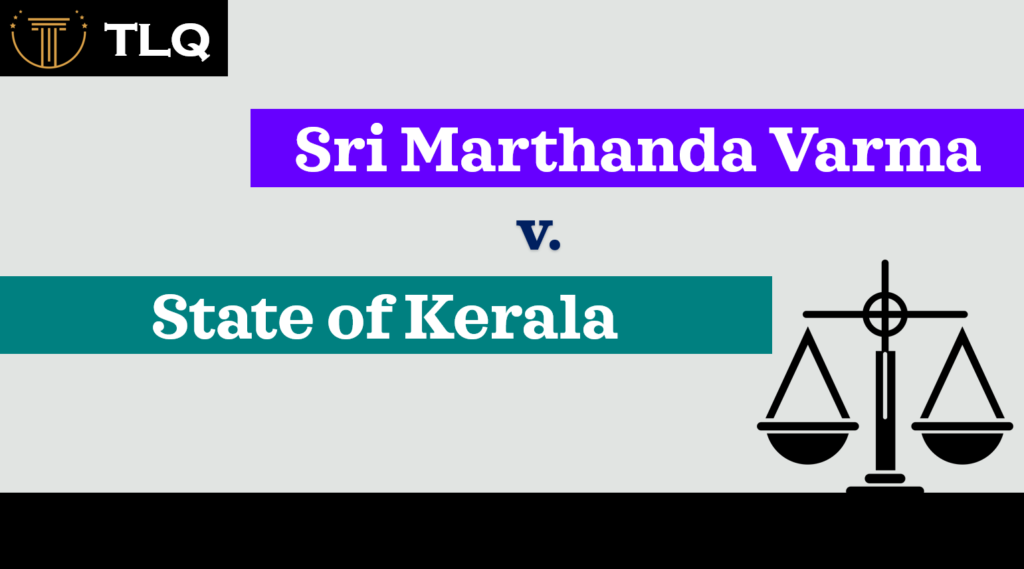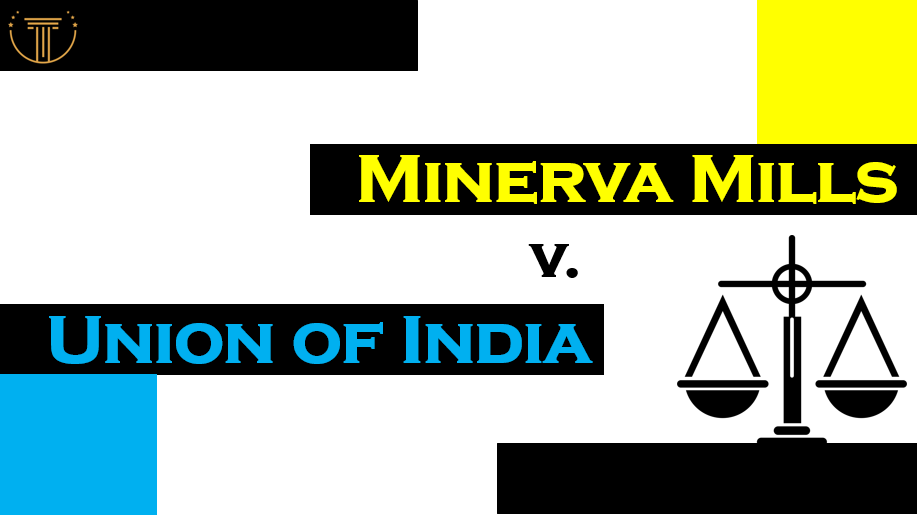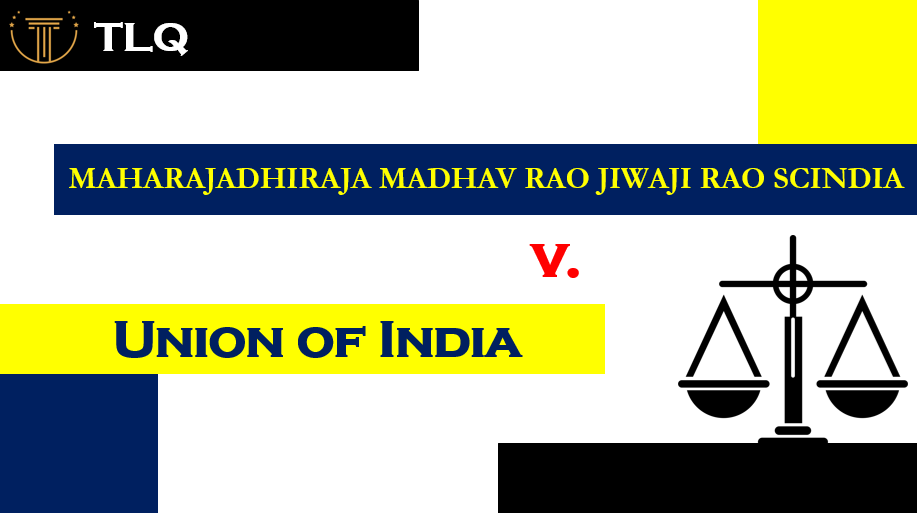Published On: 17th June, 2024
Authored By: Shri Ganarchit. B
ICFAI Hyderabad
The Enduring Legacy: A Deeper Look at the Sri Padmanabhaswamy Temple Case:
The majestic Sri Padmanabhaswamy Temple in Kerala, India, transcends the realm of a place of worship. It’s a historical landmark, a vibrant cultural center, and a microcosm of the complex interplay between tradition, legal frameworks, and religious autonomy. A recent Supreme Court verdict in 2020 regarding the temple’s administration reignited discussions about this intricate relationship. Let’s delve deeper into the case, its historical context, the ongoing debate it has sparked, and its potential long-term implications.
A Legacy Rooted in Time:
The temple’s origins are shrouded in the mists of time, possibly dating back to the Sangam period. Historians believe it served as a spiritual center even then. The Travancore royal family, ardent devotees of Lord Padmanabha Swamy, established a unique bond with the deity. In 1750, they declared the deity as the official ruler of the kingdom, solidifying their role as custodians (Shebaits) entrusted with the temple’s care. This historic covenant formed the foundation of the legal battle that unfolded centuries later.
Firstly, the court recognized the special relationship, known as Shebait (Dharam Karta), between the royal family and the deity, Lord Padmanabha Swamy. This relationship, as per Article VIII of the Covenant, acknowledged by the Union government during the temple’s accession, granted the family the right to manage the temple as custodians, not merely because of their royal status but based on their historical role.
Secondly, the court noted that Article VIII of the Covenant formed the basis of Chapter III of the Act of 1950, which governs the temple’s administration, aiming to protect the rights granted by the Covenant to the ruler and their successors even after India transitioned to a Republic. The Kerala government made amendments to the Act but did not interfere with the rights granted to the ruler(s) in recognition of this principle.
In response to the unique nature of the relationship between the deity and its custodians, the Supreme Court overturned the High Court’s decision and established a two-tier administrative structure for the temple:
- Policy decisions would be made by the head of the Travancore royal family, based on advice from a three-member advisory body comprising a retired High Court judge, an eminent person nominated by the ruler, and a chartered accountant nominated by the chair in consultation with the ruler.
- An administrative committee consisting of members appointed by the ruler and the state government would be responsible for the day-to-day management of the temple.
The ruling has stirred substantial debate regarding the protection of religious freedom, with some arguing that the court’s decision did not adequately address the fundamental right of religious freedom as outlined in the Constitution. Instead, the ruling focused on the claim of shebaitship by the ruling family rather than the ownership or title of the temple and its assets, historically owned by the deity. Moreover, concerns have been raised about the financial burden placed on the temple, especially in the wake of reduced offerings and donations due to the COVID-19 pandemic.
Furthermore, the involvement of the state and the judiciary in the temple’s administration has sparked discussions about the potential overreach of control over religious matters and the implications for constitutional guarantees of religious freedom and the management of religious orders.
A Collision of Tradition and Law:
Fast forward to 2007. A legal challenge arose, questioning the royal family’s control over the temple’s administration and its vast wealth, unearthed from hidden chambers in recent years. This ignited a legal battle that tested the boundaries of tradition and statutory regulations. The Kerala High Court’s 2011 verdict stripped the royal family of their custodial rights, citing limitations imposed by law after the last ruler’s reign. This decision marked a significant shift in the temple’s governance, prioritizing legal interpretations over historical precedent.
The Supreme Court’s Intervention
The royal family and the temple’s Executive Officer appealed the High Court’s decision, leading the case to the Supreme Court. In a landmark judgment in 2020, the apex court redefined the power dynamics. They acknowledged the unique relationship between the deity and the royal family as Shebaits, recognizing their historical role that transcended mere royal bloodline. The court emphasized the sanctity of the covenant established between the rulers and the temple deity.
The court established a two-tier administrative structure:
- Policy Decisions: The head of the royal family, guided by a three-member advisory committee, would make policy decisions. This committee ensured a blend of traditional knowledge, judicial expertise, and financial acumen, crucial for navigating the temple’s complex affairs in the modern era.
- Day-to-day Management: An administrative committee with members appointed by both the royal family and the state government would handle day-to-day operations. This aimed to achieve transparency and accountability in managing the temple’s vast resources and newfound wealth.
A Verdict with Repercussions
While the judgment aimed to honor tradition and ensure responsible governance, it has also generated debate with far-reaching implications:
- Financial Sustainability: The temple’s responsibility to bear its own security expenses, coupled with the COVID-19 pandemic’s impact on pilgrim offerings and donations, raises concerns about financial strain. Can the temple generate sufficient revenue to meet its operational needs, preserve its heritage effectively, and ensure the well-being of its devotees in the face of unforeseen economic challenges?
- Extensive Audits: The court-mandated 25-year audits, though intended to prevent financial irregularities, might add unnecessary burden and complexity to the temple’s financial management. Striking a balance between ensuring transparency and stifling growth through excessive bureaucratic processes will be crucial.
- State and Judicial Oversight: The increased involvement of the state and judiciary in the form of committee members raises concerns about potential interference in the temple’s religious autonomy. The delicate balance between ensuring proper governance and upholding the temple’s religious character in a secular state needs to be carefully navigated.
- Constitutional Considerations: The verdict’s potential infringement on the Indian Constitution’s Articles 25 and 26, concerning religious freedom and management of religious institutions, is a point of contention. Some argue that the emphasis on the royal family’s hereditary claim overshadows the fundamental right to religious freedom. This ongoing debate might have ramifications for similar cases involving religious institutions across India.
CONCLUSION:
The legal case surrounding the Sree Padmanabhaswamy Temple encapsulates the nuanced and complex intersection of tradition, governance, and religious autonomy. In its judgment, the Supreme Court seeks to protect the temple’s centuries-old heritage while grappling with intricacies such as financial viability, external oversight, and constitutional rights. As we look ahead, it becomes imperative to delve into these multifaceted issues, striving to strike a delicate balance that not only honors the sanctity of religious institutions but also establishes robust mechanisms for transparency and accountability in their administration.



